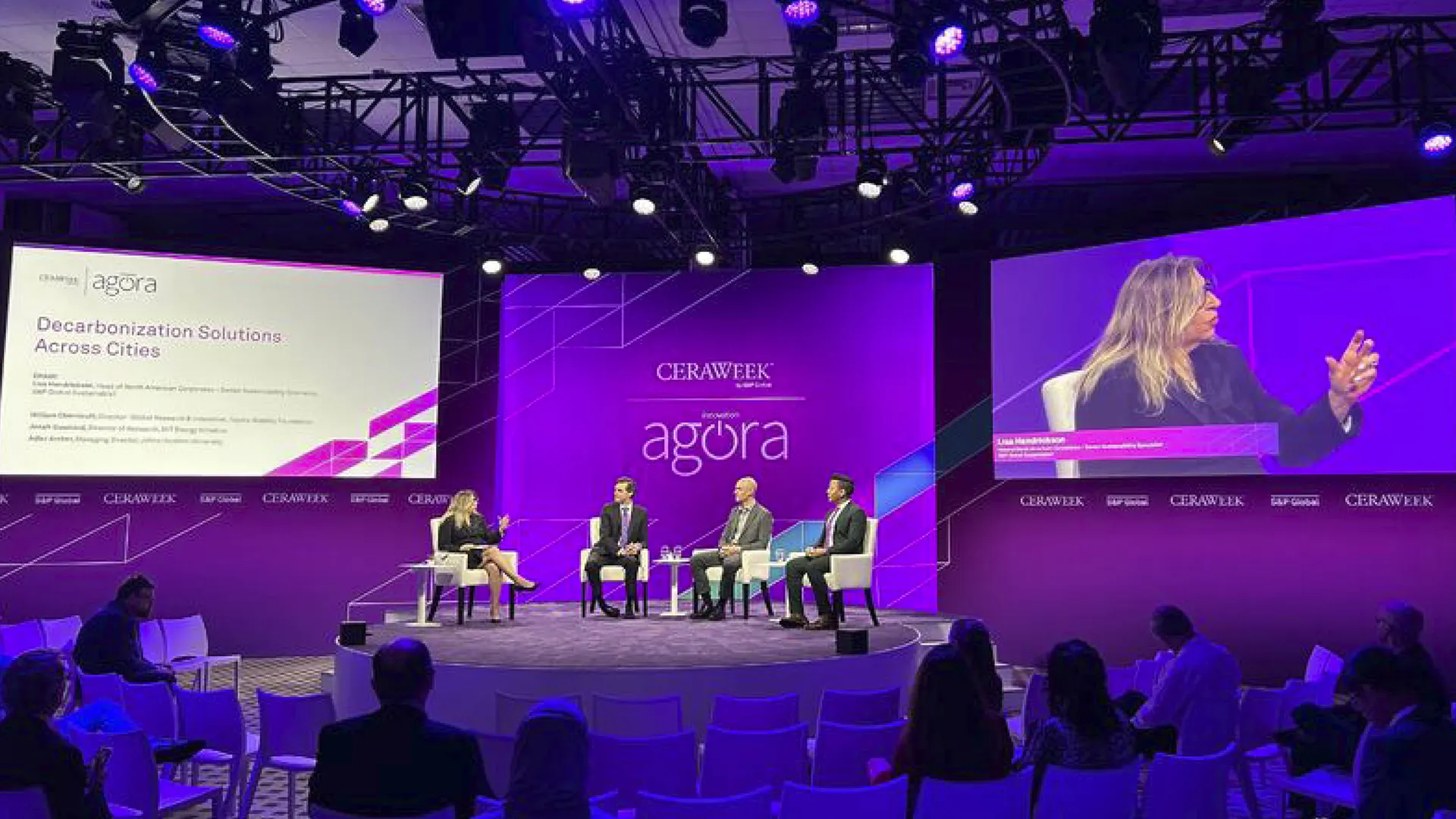Reintroducing the SWA Climate Team

We’re proud to announce that Jonah Susskind has been elevated to firmwide Director of Climate Strategy at SWA following five years as a Senior Research Associate with XL Lab, our in-house research and innovation platform. In this role, he’ll be working with SWA’s Climate Action Plan Co-Leads Sarah Fitzgerald and Mariana Ricker as well as a firmwide group of designers to advance the goals set out in the plan, which targeted a 50% reduction in project emissions by 2030.
The trio will be supported by “Climate Champions” across all eight studios, doubling down on the firm’s commitment to decarbonization and climate-positive design across our work and operations.
As Jonah gets settled into his new role, we sat down with him to learn more about the firm’s climate ambitions and his own background as a trained researcher embedded in the landscape architecture field.
Hi Jonah! Tell us a little about your background.
I’m an urbanist, artist, writer, and researcher. Most of my work engages with the social, economic, and environmental effects of climate change and urbanization. During the past several years, I’ve focused on wildfire risk and resilience, working with various fire-prone communities throughout California. Before joining SWA, I held research and teaching appointments at the Massachusetts Institute of Technology and the Harvard Graduate School of Design where I earned a master’s degree in landscape architecture.
What does your new role entail day-to-day?
As Director of Climate Strategy, my day-to-day work revolves around advancing SWA’s Climate Action Plan and ensuring that climate-positive strategies are seamlessly integrated into our design practice and our physical operations. A big part of my role is facilitating our firmwide decarbonization efforts, working with leadership and studio Climate Champions to coordinate internal carbon audits, establish benchmarks, track progress, and push new innovations forward. I also work closely with our CAP Co-Leads, Sarah Fitzgerald and Mariana Ricker, to support project teams—whether that’s by helping designers incorporate carbon impact analysis into workflows, guiding material selection to reduce embodied emissions, or brainstorming on-site carbon sequestration strategies.
Since carbon is a relatively new focus for me, I’m also spending some time boosting my own literacy. Beyond internal implementation, I’m working to establish public-facing platforms for SWA to share our decarbonization efforts, research, and best practices with the broader design community.
Talk about the scope of your research interests. How did you get interested in landscape architecture and climate action?
I got into landscape architecture by accident. My background is in fine art, sculpture, and critical visual theory, but I’ve always been drawn to urban landscapes—complex, layered spaces where social and ecological networks intertwine, where human ingenuity and material culture intersect with regional climates and other natural systems. That fascination ultimately led me toward landscape architecture as a way to engage with cities and landscapes through applied systems thinking.
Climate action, however, I pursued on purpose. As a parent, I think constantly about what my generation will leave behind—what we choose to do as the window of opportunity closes. Climate action isn’t just an academic interest or a professional responsibility; it’s a matter of legacy and accountability. If design has the power to shape the future, then we have an obligation to make that future more livable.
Why is this work important for SWA today?
SWA has one of the largest portfolios of built landscape architecture projects in the world—and with great impact comes great responsibility. As designers, we shape environments that influence carbon cycles, ecosystems, and communities for generations. That means we have a responsibility to lead, ensuring that our projects not only minimize harm but actively contribute to a lower-carbon future.
And with great responsibility also comes great opportunity. By embedding climate-positive strategies into every facet of our work, we can help set new standards for the profession and demonstrate the power of landscape architecture to support ambitious and meaningful climate action.
How is SWA delivering on its climate action goals in the near-term?
We can’t manage what we can’t measure. This means we can’t reduce our carbon footprint if we don’t know how big it is to begin with. That’s why we’re undertaking a firm-wide effort to establish carbon benchmarks across our entire portfolio. This means systematically measuring both project and operational emissions so we can set responsible reduction targets and track our progress over the next several years.
Once we have this data in place, we can refine our design processes, push for lower-carbon material choices, and scale up decarbonization efforts with confidence. This work will lay the foundation for everything that follows, ensuring that SWA’s climate commitments are backed by real, measurable data.
Who do you look up to as leaders in climate action?
Indigenous leaders are providing us with some of the most important examples of traditional ecological knowledge and climate action on the planet today. Recently, I’ve been inspired by the state legislators and city mayors who continue to double down on climate action, even as the federal government works to undermine decades of progress. Local leaders are on the frontlines, proving that real change can happen at the community scale. And teachers—especially those who are navigating unprecedented pressures while staying committed to truth and education. They’re shaping the next generation of climate leaders, equipping them with the knowledge and agency to drive action where it matters most.
What are you reading?
Landscapes of Retreat by Riosetta Elkin
Designed Forests: A Cultural History by Dan Handel
Carbon: A Field Manual for Building Designers by Matti Kuittinen, Alan Organschi, and Andrew Ruff
Creation Lake by Rachel Kushner
Torched by Alissa Walker
Learn more
Interested in learning more about Jonah’s research? Watch his lecture Landscape Strategies for a Fire-Prone Planet at the University of Toronto Daniels here.








